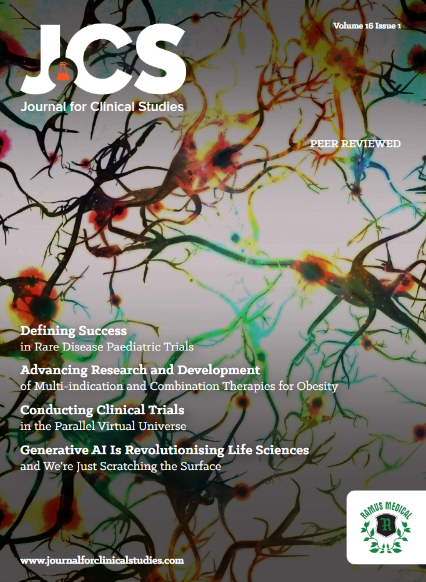With the recent advent of adeno-associated, virus-based gene therapy treatments, limb-girdle muscular dystrophy (LGMD) is currently attracting the attention of the biopharmaceutical industry, especially with the goal of restoring full or partial proteins that are otherwise dysregulated. Because of the multiplicity of LGMD subtypes (greater than 35 subtypes identified to date – each with a number and unique letter to identify it), is it likely that not all subtypes will be targeted simultaneously for drug development in the short term. For example, in contrast to Duchenne muscular dystrophy (DMD), where dysregulation of the protein dystrophin is deemed to be the mechanism of action, LGMD presents as a complex of multiple subtypes of disease with sarcoglycan and dysferlin as the primary dysregulated proteins.
Several sponsors are developing potential gene therapies for LGMD patients. Therefore, LGMD patients have a choice of clinical trials, which can raise new challenges for recruitment. Additionally, trial sites are selected based on a myriad of factors, which may include sponsor choice (for an individual company’s business purposes or rapid enrolment considerations), the physical location of the clinical sites (based on feasibility and capability), the site’s principal investigator, regional marketing considerations, and ease of patient access. These complexities must be balanced against the risk of conducting trials in countries/regions that may lack the ability, expertise, or capacity to participate.
This article describes the results of a proactive, global LGMD feasibility study conducted by IQVIA in 2019, including insights from investigators currently providing LGMD patient care. The feasibility study asked 32 questions about physician interest in and motivation for LGMD clinical trial participation and solicited data regarding the investigator-estimated numbers of LGMD patients available for clinical trials by age group and for subtypes of LGMD identified by Nigro and Savarese. Over 200 investigators were polled in 48 countries with a response from 116 investigators across 36 countries.
Overview of the Muscular Dystrophies and US Impact
Muscular dystrophies (MD) comprise a group of multi-systemic diseases caused by defects in genes for the production of muscle proteins. These diseases manifest clinically as progressive muscle weakness, with associated loss of mobility, agility, and body movements. Ongoing elucidation of the proteins and structures involved in certain disease processes has boosted the number of potential pharmaceutical targets, with significantly heightened interest in investment, partnership and collaboration as a result. The research community could benefit from tools to identify where patients are eligible and willing to participate in clinical research and where trial sites have adequate experience and resources to conduct the complex protocols that will be forthcoming. Although muscular dystrophies are rare in terms of individual disorders, when combined with other neuromuscular disorders, they have a significant influence on the global economy. For example, the IQVIA Institute estimates that, collectively, neuromuscular disorders impact 250,000 patients and their caregivers in the US alone. Analysis of healthcare charges using IQVIA real-world data indicates that total annual charges across all neuromuscular patients in the US exceed $46 billion.1
Overview of the Limb Girdle Muscular Dystrophies
The LGMD group contains heterogeneous autosomal muscular dystrophies under the phenotype of progressive proximal weakness at the hip and shoulder girdles. There are multiple forms of LGMD due to mutations in different genes (such as CAPN3, DYSF, SGCA, SGCB, SGCG, SGCD, TTN and ANO5).2 Determinants of specific diagnoses include the distribution of weakness; ethnicity; family history; age at onset; rate of disease progression; the presence of contracture, rigidity, rippling muscle, muscle hypertrophy or atrophy; and systemic involvement including cardiac, pulmonary, and skin complications.3,4 By definition, the term “limb-girdle muscular dystrophy” usually excludes other defined types of muscular dystrophies such as Duchenne and Becker MD, myotonic dystrophies, and facioscapulohumeral muscular dystrophy.5 Ethnicity and family history may reveal recessive vs. dominant variants endemic to certain regions, e.g., LGMD 2A in southern Europe. In some families, the inheritance pattern and the exact gene mutation cannot be determined. Complicating the diagnostic process are substantial overlaps, as mutations in different proteins that share similar cellular functions can result in almost identical clinical phenotypes. There is no standard of care for patients with LGMD,6 though as with Duchenne MD, physicians often prescribe corticosteroids. In addition, supportive therapy is often prescribed for those patients with cardiopulmonary issues and cognitive issues. Many LGMD patients take various vitamin supplements, although little is known or proven about vita min supplementation in patients with LGMD.7















